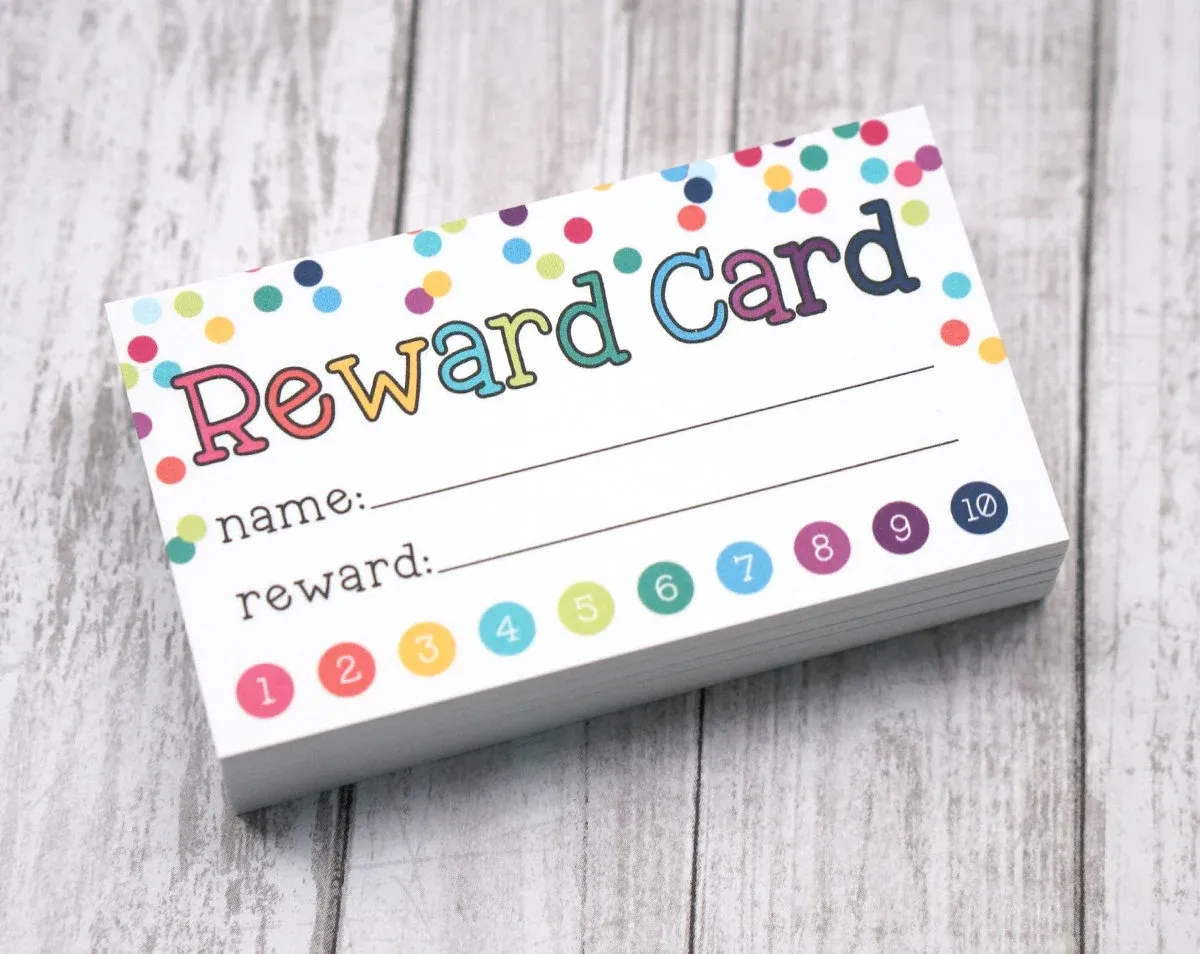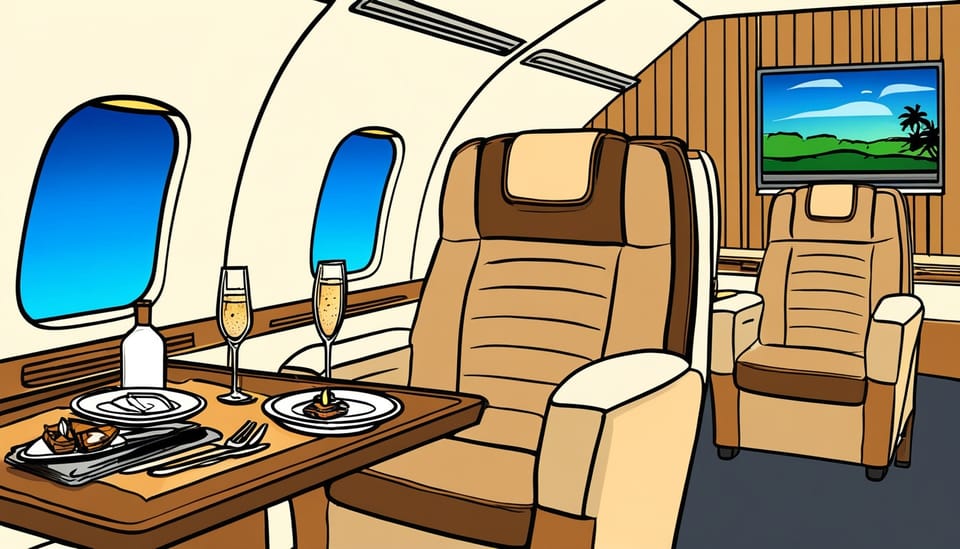Day 3/5: Lesser-Known Travel Loyalty Programs That Pack a Punch
BLUF: Don't chase popular loyalty programs when you can discover hidden gems: Niche airlines offer Business Class to Europe for ~30k miles, while boutique hotels yield luxury stays for fewer points. Unlock massive value from shopping portals (up to 20x points!), car rentals, and cruises...

Deep Research Using AI
This epic, nearly 20,000-word beast of an article series was painstakingly conjured up with some Deep Research functionalities. While it may sound incredibly authoritative, well-informed, and even suspiciously insightful, remember—this content is intended for entertainment purposes only. Think of it as the informational equivalent of a late-night Wikipedia rabbit hole: fun, fascinating, occasionally eyebrow-raising, but definitely not something you should bet your house, job, or firstborn on.

If You Only Had 60 Seconds to Read This Article (Click Here)
Beyond mainstream loyalty programs, significant value lies in lesser-known airline, hotel, car rental, cruise, and bank reward schemes. Diversification across these smaller programs, much like an investment portfolio, mitigates risk from devaluations in major programs and increases opportunities for high-value redemptions and unique travel perks. For instance, niche airlines like AirAsia BIG can offer long-haul flights for ~50,000 points roundtrip during promotions, while Copa ConnectMiles or Avianca LifeMiles (Star Alliance members) periodically feature Business Class redemptions to Latin America/Europe for 30,000-40,000 or 110,000 miles (First Class Europe) on sale, respectively, often with no fuel surcharges. Aegean Miles+Bonus is notable for 30,000-mile one-way intra-European business class awards, and Turkish Airlines Miles&Smiles can offer business class to Asia for 50,000-70,000 miles roundtrip during sales.
In hotels, boutique collections and independent programs, such as Leading Hotels of the World (LHW Leaders Club) or Small Luxury Hotels of the World (SLH White, partnered with Hyatt), offer luxury stays with potentially lower point costs or exclusive member rates and perks (e.g., free nights, upgrades). Preferred Hotels & Resorts (I Prefer Hotel Rewards) yields room credits (e.g., $300 for 25,000 points), and Choice Privileges' Ascend Collection can book luxury retreats for 8,000-12,000 points/night, often for properties valued at $300+. Shopping portals, frequently overlooked, provide substantial bonus points; lesser-known airline/hotel malls or credit union portals can offer 5x-20x points per dollar spent, allowing quick accumulation for free travel without additional spend.
Car rental and cruise line loyalty programs are also "goldmines." Major car rental programs offer free days (e.g., Hertz Gold Plus provides a credit for every $750 spent), and airline/hotel partnerships allow earning additional miles/points (e.g., 500 airline miles per rental). Stacking promotions with car loyalty can yield free upgrades and bonus points. Cruise loyalty programs like Carnival VIFP or Royal Caribbean Crown & Anchor Society provide significant onboard value, including free drinks, specialty dining, cabin upgrades, and onboard credit ($50-$150+ per sailing), which can dramatically reduce out-of-pocket vacation expenses.
Finally, lesser-known credit card issuer-specific reward programs, often from regional banks or credit unions, can offer competitive features like no annual fees, easier bonus qualification, and unique transfer partners (e.g., points transferring 1:1 to Southwest or Marriott). Leveraging alliance and transfer networks further amplifies value; for example, Iberia Avios can book American Airlines flights for 4,500-7,500 Avios each way on domestic routes, often cheaper than direct AAdvantage redemptions. Transfer bonuses (e.g., 30% bonus miles from Amex/Chase to partners) can temporarily convert mediocre programs into high-value redemption opportunities.
Everything else you need to know is just below 👇🏻
Loyalty programs are often judged by the size of their membership or the fame of the brand behind them. The truth is, some of the most valuable points and miles opportunities lie in unexpected places. Lesser-known programs – whether airline, hotel, car rental, or even local bank reward programs – can deliver outsized value when leveraged correctly. This guide dives deep into those hidden gems, showing how diversification across smaller programs can unlock high returns and unique travel perks. When you branch out beyond the mainstream, you often find easier award availability, bonus promotions that major programs don’t offer, and niche partnerships that let you stretch your points much further.
Consider loyalty like an investment portfolio. Putting all your points into one major airline or hotel program carries risk if that program devalues or limits award space. By spreading your earning and burning across several smaller programs, you mitigate that risk and increase your chances of finding bargain award redemptions. In practice, that means exploring programs from regional airlines, boutique hotel chains, and even local credit unions. These programs may surprise you: they often feature low award thresholds, generous upgrade options, and special promotions that aren’t heavily advertised. In short, thinking beyond the big brands can be a strategic way to maximize every travel dollar. Below we unpack some of the best lesser-known loyalty programs, explaining why they’re worth your attention and how to use them for maximum benefit.
Underrated Airline Loyalty Programs
Most frequent travelers focus on legacy carriers like American, United, or Delta, but niche and regional airlines often have loyalty programs packed with value. Many smaller airlines set up their award charts and upgrade rates to compete with the majors, which means you can sometimes snag premium seats or upgrades for very few points. In addition, these carriers fly to airports or regions that big airlines don’t serve directly, giving you more routing options. Collecting miles with a smaller airline also diversifies your points portfolio. If one of these programs runs a frequent bonus promotion or partners with an up-and-coming carrier, you’ll reap more than a typical traveler banking just on the majors.
Some standout niche airline programs and strategies include:
- AirAsia BIG – AirAsia (Asia’s largest budget carrier) runs the BIG loyalty program. Though budget airlines usually don’t focus on loyalty, BIG points can be very valuable during frequent sales. AirAsia also partners with other carriers like AirAsia X and even with Malaysia Airlines on certain routes, letting you use BIG points broadly. Because the award cost is tied to published fares, you can often find long-haul flights on AirAsia X for just ~50,000 points roundtrip (often during promotions), which is far cheaper than comparable flights on network carriers.
- Copa ConnectMiles (Panama) – Copa Airlines operates a vast Latin American network and is a Star Alliance member. Its ConnectMiles program occasionally offers flash sales for Business Class to and from the U.S. and Latin America for about 30–40k miles roundtrip – a steal. It’s often easier to find Business awards on Copa through ConnectMiles than through larger partners. Additionally, ConnectMiles runs promotions and transfer bonuses that you won’t see in larger programs, such as small-bonus mile sales for bank transfers or hotel point conversions.
- Avianca LifeMiles (Colombia) – LifeMiles is Avianca’s award currency, and they run generous award chart sales. Because Avianca is also in Star Alliance, you can use LifeMiles to book many partner flights (like United or Lufthansa) at reduced rates. LifeMiles regularly offers 20–25% off awards or “buy miles” deals. For example, a roundtrip first-class seat to Europe can be booked for around 110,000 miles on sale (normally ~180k in most programs), with no fuel surcharges. Consider topping up your LifeMiles during a sale to book a business or first class trip at a bargain.
- Cebu Pacific GetGo (Philippines) – A strictly domestic and regional carrier, Cebu Pacific’s GetGo program has extremely low award thresholds for flights within the Philippines and to nearby countries. It’s ideal if you’re traveling around Asia’s island nations. Promotions often drop award tickets to just a few thousand points each way. While this program won’t get you to Europe, it can be a game-changer for travel in the Philippines, Malaysia, and Indonesia.
- Aegean Miles+Bonus (Greece) – Aegean is a smaller European carrier in Star Alliance. Miles+Bonus is famous in point-nerd circles for having one of the lowest business-class award charts in the alliance (e.g. 30k miles one-way within Europe). It also allows free stopovers and holds award reservations for free. A lesser-known trick: you can often transfer points from Marriott to Aegean at a favorable rate (3:1 plus a bonus) and then book Lufthansa or SWISS flights through Aegean for far fewer miles than booking directly with Miles&More or United.
- Turkish Airlines Miles&Smiles (Turkey) – Not exactly “unknown,” but worth mentioning because it’s often underutilized by travelers outside Europe. Turkish has very high-end cabins (even Business Class on European routes includes lounge service), and their award sales allow fantastic redemptions. For example, business-class flights to Asia can sometimes be found for 50–70k miles roundtrip on sale. Miles&Smiles also adds 25% bonus miles for miles earned via Turkish flights if you have any status.
Beyond these examples, many regional carriers worldwide have points programs that can complement your main strategy. The key is to look for carriers that fly where you want to go (or connect conveniently) and to compare their award charts to those of bigger airlines. Use tools like award search engines or the airlines’ own websites. And don’t forget to enroll and credit your flights to these niche programs whenever you fly a partner: for instance, flying Star Alliance flights (United, Air Canada, etc.) credited to Avianca or Turkish can net you more points or even free stopovers.
Hotel Loyalty Programs Beyond the Big Brands
Luxury and boutique hotels often belong to lesser-known loyalty collections or independent reward programs. Unlike the giant hotel chains (Marriott, Hilton, IHG, Hyatt), these programs aren’t always top-of-mind—but they can yield incredibly rewarding redemptions. Boutique hotels frequently charge fewer points per night than big-brand equivalents because they aren’t trying to fill thousands of rooms. Independent and local hotel chains may also offer flexibility (like cash+points stays) and unique perks. For the savvy traveler, these programs mean you can enjoy luxury stays at relatively low point costs, and often get personal touches (free breakfast, suite upgrades) that big chains reserve for top elite members.
A few standout lesser-known hotel loyalty programs and collections include:
- Leading Hotels of the World (LHW Leaders Club) – LHW is an exclusive consortium of over 400 luxury hotels worldwide (boutique luxury, heritage hotels, resorts). Membership is free, and points never expire. While LHW doesn’t publicly publish fixed award charts, members often receive special member-only rates and perks. In practice, it’s not a “points redemption” program, but LHW often sends out 3rd or 4th night free promotions or 5–10% off member rates at its properties. When combined with LHW credit card offers or packaged promotions, these deals can make very expensive hotels (like chateaus in Europe or luxury lodges in Asia) effectively affordable. For example, signing up for a newsletter or credit card affiliated with LHW can yield instant discounts or a free night in a 5-star property with no blackout dates.
- Small Luxury Hotels of the World (SLH White) – SLH partners with Hyatt, but historically it also had its own White Loyalty program. If you have status with Hyatt (via the World of Hyatt program or an eligible credit card), you can also earn and redeem points on SLH properties at a 1:1 ratio (though SLH properties price award nights higher per category than Hyatt’s usual hotels). The advantage here is that some SLH boutiques (like villas in Europe or resorts in tropical destinations) can be booked with Hyatt points. Sometimes a Category 6 Hyatt (30k points) can get you a suite in an SLH property that would cost $500+. Check SLH partners in your target destination and see if a Hyatt award night might be a bargain.
- Preferred Hotels & Resorts (I Prefer Hotel Rewards) – Preferred Hotels is another global independent collection (over 700 hotels). Its I Prefer program lets you earn points (100 points per $5 spent) and redeem them for room credits (like $300 credit for 25,000 points). More importantly, I Prefer members get VIP benefits at participating hotels (often things like complimentary breakfast or resort credit). Because Preferred properties are independent, you can sometimes get far more than $300 value out of a reward credit. If you stay at a boutique hotel in I Prefer program for a few nights, those $300 credits often exceed the price of a free night. Signing up for I Prefer (and often linking a credit card) to grab its enrollment bonus points can yield a quick free night or spa credit at a luxury inn.
- Choice Privileges (Ascend Collection) – Choice Hotels isn’t small, but within it is the Ascend Collection of boutique hotels. Many Ascend properties (especially outside big cities) can be booked for 8,000–12,000 Choice points per night – an exceptional value. For example, a standalone luxury retreat or historic inn in a national park may be an Ascend property with nightly rates of $300+, yet cost only 12k points to book. Use Choice points at Ascend hotels to get upscale accommodations at mid-tier redemption rates. (Tip: Even if you don’t have Choice status, booking direct or via special links can unlock bonus points – and 8k–12k Choice points is often less than what many legacy programs would charge for similar hotels.)
- Local Boutique Chains – Many regions have local or boutique hotel groups with their own schemes. Examples include South Korea’s Lotte Hotel Rewards, India’s Taj InnerCircle, or Japan’s Prince Hotels Irodori. These are only worth joining if you travel to those regions often, but the rewards can be huge (free nights, upgrades, and country-specific perks). Even small European groups (like Bulgari Hotels or Amanresorts, though Aman no longer has a formal program) sometimes extend a free breakfast or suite upgrade to repeat guests or members of their mailing list. Whenever you book a luxury boutique hotel, always ask if they have a loyalty program – even a simple email signup can get you a discount, and any repeat stay should be credited if a program exists.
In practice, how do you use these boutique programs for maximum value? First, compare point rates: often a boutique property will charge far fewer points per night than a big chain in the same area. Next, combine those points with other deals: many boutique programs run seasonal promotions (like double points for stays, or free nights after a certain number of paid nights). Finally, remember the extras – points earned from paying for one boutique stay can be redeemed for free stays or upgrades at other luxury properties in the collection. Over time, you’ll find that a portfolio of boutique-hotel points lets you weave together affordable stays at high-end locations, well beyond what the mainstream programs offer.
Shopping Portals: The Unseen Points Powerhouses
Every day purchases and online shopping can be a major source of bonus points if you use the right portals. Many travelers overlook this because these portals are “out of sight” – they’re tucked away on airline or hotel websites, or hidden behind credit card rewards sites. However, logging in to a shopping portal before you buy something online can multiply your points. Less mainstream shopping portals – run by banks, airlines, or independent services – often offer very high points-per-dollar on certain categories or merchants. By treating everyday online shopping as a points-earning opportunity, you can rack up bonus miles and points quickly, far beyond just the airline miles for flying or hotel nights for staying.
Some ways to tap into these hidden portal opportunities:
- Airline and Hotel Online Malls – Most major airlines and hotel programs have an e-commerce portal (often called a “shop&fly” or “bonus partner” site) where hundreds of retailers give bonus miles or points for purchases. For example, you might earn 6 miles per dollar at HomeDepot through an airline portal, or 10 points per dollar at Bloomingdale’s via a hotel rewards shopping portal. Lesser-known portals (like Latam Airlines, Asiana, or Hilton Honors portals) sometimes have exclusive limited-time multipliers for certain retailers (e.g. 20x points at Nordstrom). Before buying anything online, do a quick search for that store in all your accessible portals. Even checking Rakuten (which partners with some airlines to feed miles) can reveal hidden bonuses.
- Credit Card Shopping Sites – Many banks and credit cards offer their own online shopping portals. For instance, certain regional banks and credit unions run e-commerce sites where cardholders can earn bank-specific points or airline miles. These are often less-publicized than the big ones. Example: a credit union’s rewards portal might give you 3 airline miles per dollar spent at a retailer, on top of your normal credit card earnings. If you have multiple cards, compare their portals for a given store – the best one will give the highest multiplier.
- Cashback and Rewards Sites – Sites like Rakuten (formerly Ebates) or TopCashback technically give cash back, but they often partner with airlines or hotel programs too. You might earn 2% cash back on electronics and then convert or transfer that cash to points. Also, affiliate portals like Points.com or local reward aggregators can sometimes surface deals on dining or services where regular portals don’t. Use these as a double-dip: buy through the portal, earn cash/points, and still use your credit card points on top.
- Browser Extensions and Apps – Tools like the Honey extension or the Cashback Monitor website show you where the highest rebates or points are. They can alert you when you are on a site that has a portal or bonus offer. Set up alerts for your frequent stores. There are even apps that alert you if hotel or airline points deals are available for your planned purchase.
Remember: shopping portals are constantly changing their offers. A portal might have 10x points at a store this week, and nothing the next. Keep a list of your favorite portal websites (most let you bookmark or follow specific brands). Dedicate a few minutes before big purchases to check these portals. Over a year, the points from shopping can fund a free flight or luxury hotel stay — without spending any extra money on travel itself.
Rental Car Rewards: An Often Overlooked Goldmine
Renting a car isn’t just about convenience; it can also be a points-earning opportunity if you play the loyalty game right. Most major car rental chains have their own rewards programs (Hertz Gold Plus, Enterprise Plus, National Emerald Club, Avis Preferred, etc.) that give free rental days or upgrades. Fewer travelers realize that combining car rental loyalty with airline and hotel programs multiplies value. For example, many airlines have partnerships where you can choose to earn airline miles instead of car rental points on the same rental. Or, there are credit cards that give bonus points when you rent cars from certain companies. By stacking these programs, you turn one car rental into several forms of currency: free days through the rental loyalty program, airline miles via partnership, and credit card points via spending.
Key strategies to unlock this goldmine:
- Join Major Car Programs – It’s free to join Hertz, Avis, National, etc. Even if you rent just once or twice a year, those points can add up. For example, Hertz Gold Plus members earn one credit (almost a free day) for every $750 spent; after just a few rentals you might redeem a free weekend. National’s Emerald Club lets you pick any midsize car for a certain number of points, so you can effectively lock in cheaper rentals for premium vehicles later. The value of these free rentals is often 15–30% of what you paid for the original rentals – a great return on your loyalty.
- Airline Partnerships – Before your rental, check if your airline’s loyalty program partners with a rental agency. Many do. For example, American Airlines AAdvantage lets you earn 500 miles per rental at certain partners, or any airline miles on all Hertz rentals. On a single 3-day rental, that can be thousands of extra miles. In some cases, you might even earn elite qualifying miles or credits for the rental. The trick is to either book through the airline’s car rental portal or supply your airline mileage number at the counter. This way, you’re stacking on miles that you could combine with flight miles for award bookings.
- Hotel Points from Cars – Several hotel chains have rental car partners. Hilton Honors and World of Hyatt, for example, often offer bonus points on car rentals if you enter your hotel loyalty number. If you’re dual-earning (car points + hotel points), a single rental might earn you enough points for a free hotel night (especially if the car company or hotel is running a promotion like double points for rentals).
- Promotions and Coupons – Always search for discount codes or membership deals (AAA, AARP, credit card discounts) before renting. Many car rental programs run weekend promotions (like “rent Friday through Monday, get a free upgrade and 500 bonus points”). These promotions typically allow stacking with loyalty, so you get a sweet upgrade and extra points. Loyalty emails and apps usually list current promotions (e.g., “500 bonus miles for rentals over $100 this month”). Register for those to ensure you never leave points on the table.
Overall, treat the rental counter as another opportunity to earn travel rewards. By melding these programs together (rental loyalty status, airline miles for rentals, hotel points, credit card cashback), you can transform a standard road trip into a suite of benefits: free rental days, free flights, and discounted stays. Over time, that “little extra” from each rental significantly reduces the net cost of your next big trip.
Cruise Line Loyalty Programs: The Quiet Value Providers
Cruise loyalty programs rarely make travel headlines, but for frequent cruisers they offer huge onboard value. Each major cruise line has a points or tier program that rewards repeat sailing. In many cases, the benefits (free drinks, specialty dining, cabin upgrades, onboard credit, or even a free cruise after a few sailings) are exceptionally generous and often add up to more cash-value than comparable programs on land. These programs can turn a moderately priced cruise fare into a luxury experience through credits and perks. And in off-peak seasons or on older ships, combining a loyalty discount with bonus credits can make a very inexpensive itinerary into a very lavish one.
Highlights of cruise line loyalty programs:
- Carnival Cruise Line – VIFP (Very Important Fun Person) – Carnival’s free program has tiered levels based on cruise days. Even at the lowest level, you’ll get free priority boarding. Higher tiers earn gift cards for soda and at-theater, complimentary drinks, free Wi-Fi days, and eventually free cruise certificates. During sales, Carnival often offers promotions like 50% off deposits plus $50–$100 onboard credit for booking – combined with VIFP membership perks, you might sail a 7-day cruise for very little out-of-pocket (sometimes as low as a couple hundred dollars cash, plus all your lunch, shows, and some drinks covered by credit).
- Royal Caribbean – Crown & Anchor Society – Royal’s loyalty tiers give increasing benefits. Even the entry-level Gold tier offers perks like unlimited soft drinks, non-alcoholic beverages, or free specialty coffee. Mid-tier (Platinum) includes a free lunch in a specialty restaurant and a 4-category cabin upgrade. Diamond Plus members get a complimentary shore excursion or a $150 beverage card on cruises 4 nights or longer. On many shorter Caribbean cruises, a $150 beverage credit is almost equivalent to getting a free beverage package for two people. Combine this with a “Kids Sail Free” or “Buy One Get One 50% Off” sale and you can see how a family cruise becomes very affordable.
- Norwegian Cruise Line – Latitudes Rewards – NCL’s program starts with a complimentary lunch in a specialty restaurant at Gold tier and moves up to free photographs, complimentary dinners, and eventually 2-for-1 cruises at higher levels. The onboard credit rewards ($50–$150 per sail) can be applied to just about anything: drink packages, spa treatments, or even future cruise deposits. For a couple doing back-to-back sailings, these onboard credits can cover dinner at a steakhouse or a couple of massages, adding significant value.
- MSC Voyagers Club – This program is similar, with benefits that include priority embarkation at higher levels, free cocktails, Wi-Fi, and discounts on future cruises. MSC is often cheaper than mainstream lines, so even a small credit (like $50) on a short cruise can be an outsized percentage of your budget.
- Disney Cruise Line – Castaway Club – Yes, Disney’s often considered premium, but note that Castaway Club members get complimentary gifts, storage saver packs, and on some sailings, discounts on excursions and a free day of specialty dining. Even for families, this can reduce the cost of a famously expensive cruise.
The best value comes from stacking these programs. For example, travel agents or cruise sites often advertise discounts for loyalty members (or when using a certain credit card). Always mention your loyalty number to the booking agent or at check-in. If you plan multiple cruises, try to book consecutive trips – many lines carry over perks. In essence, by being a “loyal cruiser,” you turn each trip into a combination of discounts and bonuses, so that every vacation feels like a custom-tailored rewards experience.
Credit Card Issuer-Specific Rewards Programs
Beyond the airline and hotel programs and the big bank reward cards, smaller credit card issuers have their own points programs that are surprisingly competitive. These include local or regional banks, credit unions, and even retailers with co-branded travel cards. Because these programs aren’t national headlines, travelers often overlook them. Yet they can have great features: no annual fees, easier qualification for bonuses, or partnerships that major cards don’t have. For instance, a community bank’s card might let you earn points that transfer to Southwest or Marriott at a 1:1 rate, something a national bank card won’t do. Or a regional airline co-branded with a smaller bank can mean far fewer points needed for upgrades than the same airline’s major-bank card.
Consider these types of issuer-specific opportunities:
- Regional Airline Credit Cards – Some lesser-known carriers partner with local banks to issue credit cards. Example: In Canada, cards like the Air Canada Aeroplan BMO or WestJet RBC give bonus miles, even though BMO and RBC aren’t major U.S. banks. In the US, a regional US airline (like Hawaiian Airlines or Alaska in some markets) might issue cards with Chase or Barclays, but sometimes there are smaller co-branded cards in certain states. If you live where that regional carrier flies frequently, the sign-up bonus and ongoing earn rate (say 2 miles per dollar on the regional airline’s tickets) might beat generic travel cards.
- Credit Union Cards – Many credit unions offer travel reward credit cards. These cards often have no annual fee and allow transfers to a few hotel or airline partners. For example, credit unions in the Pacific Northwest might let you earn points that transfer to Alaska Airlines or Marriott. The MasterCard or Visa from a credit union may list partners like InterMiles, Singapore KrisFlyer, or Choice Privileges. The upside: credit unions are less strict on approvals, so you might get a high-value travel card even if major banks declined you. And again, watch for enrollment promotions – many issue 10,000–20,000 bonus points with low spend requirements.
- Store Co-Branded Cards with Travel Benefits – In some countries, retail chains offer cards that earn points usable for travel. For example, in parts of Asia or Europe, a large retailer’s card might give points transferable to airlines like Singapore Airlines or used for hotel bookings. In the U.S., the opportunities are rarer, but think broadly: some hotel chains or flight consolidators have store cards (e.g. a shoe retailer card that gives airline miles). Even small airline-focused retailers (like an airfare website) might let you earn points toward travel when using their private-label card.
- Unadvertised Portals and Bonuses – Sometimes banks have small portals or partner offers not widely known. For instance, a bank might send an exclusive email: “Shop at Macy’s for 3x airline miles” that they don’t advertise on their website. Monitor emails from any travel reward credit card you hold, even if it’s from a small issuer. You’ll occasionally find enrollment bonuses for shopping, dining, or travel bookings that easily outpace the “standard” big-bank bonuses.
The key is to keep an open mind and do occasional searches. If you always assume the “big four” banks have the only worthwhile cards, you miss out on these niche deals. By chatting with friends who use different banks, or reading travel forums that focus on points (where someone might mention an obscure card), you can discover these hidden gems. Over time, a portfolio of issuer-specific cards can yield free flights and stays equivalent to much larger bank programs – and often with fewer strings attached (like no foreign transaction fee, or no minimum spend for the bonus).
Leveraging Partner Alliances and Transfer Networks
No loyalty program is an island. Many hidden values are found by leveraging partnerships and transfer networks that connect otherwise unrelated programs. Major airline alliances (Star Alliance, Oneworld, SkyTeam) and hotel partnerships (like Marriott/SPG or Amex/Marriott relationships) let you move points or redeem them in creative ways. Even if a program seems small, it might be tied to a global alliance or credit card network that vastly amplifies its worth. Always keep partner redemptions and point transfers in mind before booking directly through one program.
Some strategies to uncover these network synergies:
- Airline Alliances and Codeshares – If you have miles in a small or foreign program, check all the airlines they partner with. For instance, if you collect miles with a small Asian carrier, see if those miles can book flights on its Star Alliance or joint venture partners. Sometimes better award space is available through the partner’s own site. A classic trick: Iberia Avios can book American flights between U.S. cities for just 4,500–7,500 Avios each way (depending on distance), which is often cheaper than booking with American AAdvantage points on domestic routes. Similarly, Alaska Airlines miles (outside the U.S.) can be used on Cathay or Japan Airlines to Europe/Asia. Always search partner award charts after searching your own – you might find a hidden sweetheart deal.
- Credit Card Transfer Partners – Cards like American Express Membership Rewards, Chase Ultimate Rewards, Citi ThankYou, and Capital One Venture points often transfer to a variety of airlines and hotels. A little-known alliance: Capital One has added transfer partners like Emirates Skywards, JetBlue, and even Choice Privileges. By pooling these transferable points, you effectively gain access to dozens of programs. The trick is to decide where they give the best value. For example, if Marriott is devaluing (which it has in the past), check if moving points to a new airline partner (like Singapore or Virgin Atlantic) and then booking flights is more valuable. Keep an eye on transfer bonuses: sometimes Amex or Chase offers 30% bonus miles when sending points to a partner, which can convert a mediocre program into a gold mine temporarily.
- Hotel Alliances – Not as common as airline alliances, but there are cases. Marriott’s acquisition of SPG created the largest hotel transfer network: Marriott points can move to airlines like United or Delta at various ratios. But also note partnerships like Wyndham/Choice for some regional hotel groups. Occasionally, promotions allow moving points between hotel and airline programs at advantageous rates – for example, transferring Bilt points (from rent payments) into Marriott, then shifting to Alaska miles during a transfer bonus can yield cheap flights. Always read the fine print: transfers are irreversible, so do the math carefully, but don’t miss out on stacking bonuses.
- Cooperative Scheduling and Itineraries – Some programs allow you to create complex itineraries by mixing partners. For example, use LifeMiles to book a Star Alliance multi-carrier trip through South America, or use Virgin Atlantic miles to book ANA First Class (via their partnership). If you’re comfortable with the rules, mixing partners can produce exotic routes at a fraction of the usual cost. Sometimes a trip that would be 250,000 points roundtrip in one program might only be 100,000 by splitting between two alliances. Check the rules of each program (stopovers, routing restrictions, allowed carriers) – a program with “ugly” routing rules may be a bargain if it still permits your desired stops with far fewer points.
Final Thoughts: Unlock Hidden Rewards
The bottom line is that hidden value often lies between programs. Before you finalize any award booking, do a parallel check: “If I transferred these points to Partner X and booked there, could I save a ton?” This extra step has solved many travelers’ problems when the obvious program had no seats or had become expensive. It’s the hallmark of an expert traveler to look past the surface of one loyalty program and see the entire network of alliances and transfers.
Taking a strategic view of loyalty programs means not only collecting points, but knowing how to move and spend them across a web of relationships. By exploring the niches – small airlines, boutique hotels, local shopping portals, and credit cards – and then connecting them through alliances and transfers, you essentially build a custom travel ecosystem. That ecosystem can deliver free upgrades, unexpected free nights, and trips that never show up on the usual travel blogs. Armed with these hidden gems, your travel rewards arsenal becomes far more powerful and flexible.
Happy earning and see you in Day 4 of our series, where we’ll continue to build on this foundation for even more award travel success!




